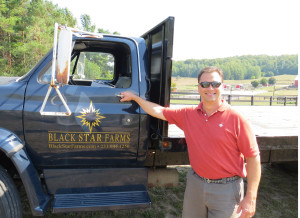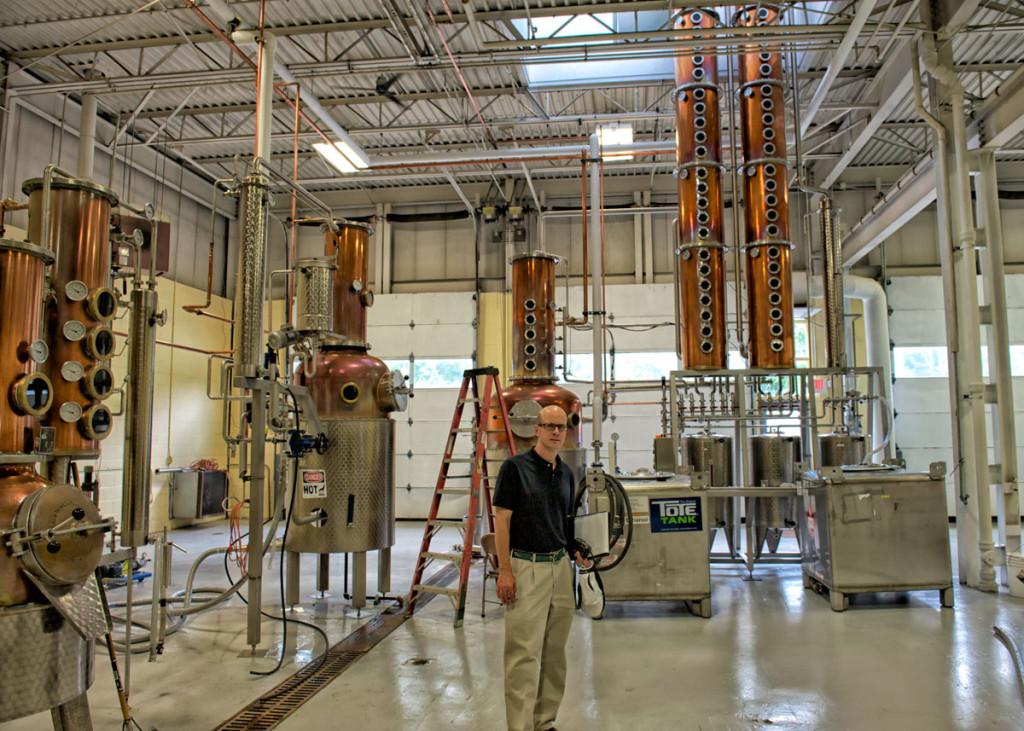Michigan State University Propels Michigan Wine Industry
 100 years ago in Michigan, Henry Ford built the first automated assembly line in the world. The Michigan economy has had its ups and downs since then, but today there is a renewed spirit in the state as it recovers from the last recession. And no place is this “can do” spirit more in evidence than at Michigan State University (MSU) where wine and distillation research and education are focused on making an immediate impact in the private sector.
100 years ago in Michigan, Henry Ford built the first automated assembly line in the world. The Michigan economy has had its ups and downs since then, but today there is a renewed spirit in the state as it recovers from the last recession. And no place is this “can do” spirit more in evidence than at Michigan State University (MSU) where wine and distillation research and education are focused on making an immediate impact in the private sector.
Michigan was mainly a grape juice producer until G. Stanley Howell, now professor emeritus of horticulture, came to Michigan State University in 1969. Howell is credited with promoting wine grape production and helping the Michigan wine industry grow to $300 million dollars a year. Continuing in the tradition of Dr. Howell, MSU is embarking on new programs to expand Michigan’s wine industry while also vaulting the state into a leading role in distillation and distilled spirits.
Enticing Paolo Sabbatini, MSU assistant professor of viticulture, to leave the University of Ancona in Italy and come to Michigan was a goal the university accomplished in 2007. Sabbatini is now the statewide research and extension viticulturist. His primary research evaluates vine physiology under cool-climate conditions, seeking environmental and cultural factors that limit vine growth, vine yield, canopy management and grape varieties.
The university’s cold hardy research vineyard in East Lansing consists of 200 carefully monitored vines. The research vineyard is being used to test existing and new trellising systems for cold climate grapes, many developed at the University of Minnesota. In its fifth year, the MSU vineyard also sells grapes to private wineries including Bergdorf’s winery in Lansing.
See related story: Offbeat European Grapes Growing Across the Midwest
Dave Burgdorf, the owner of Burgdorf’s Winery, is proud that the grapes for his new Marquette wine will come from MSU. The money MSU receives for selling its grapes goes to support viticulture programs in East Lansing and the two MSU research stations. The spirit of cooperation between Burgdorf’s and the University extends to MSU chemistry students who use Burgdorf’s winery to learn how wine is made. “My wife was a teacher and I was involved in outreach during my career with the USDA, so we like to help develop the next generation of winemakers,” Burgdorf said.
Michigan State has also worked directly with other wineries in Michigan. For the past three years, Two Lads Winery in Traverse City has hosted MSU’s crop cover experiments. At Black Star Farms in Leelanau County, winemaker Lee Lutes and Dr. Sabbatini are conducting trials of new varietals that have not traditionally been grown in the Midwest.

Michigan State University graduate and Black Star Farms head winemaker Lee Lutes conducts viticultural research with MSU at his Leelanau Peninsula Winery
MSU is also doing work in both the lab and in the vineyard on controlling pyrazines. Pyrazines are a chemical that contributes to a sometimes unpleasant green pepper taste and aroma in wine. Because they can be detected in wine at 14-16 parts per trillion, pyrazines can be a problem with Midwestern wine grapes, especially Cabernet Franc.
“The objectives of my study is to improve the fruit quality of Cabernet Franc applying different viticultural practices, ultimately improving wine characteristics, especially the flavor profile which is hugely influenced by 3-isobutyl-2-methoxypyrazine (IBMP) level in our region,” Dr. Sabbitini said.
In 2010, multiple experiments with different levels and timings of cluster thinning and leaf removal from the basal nodes were evaluated. Dr Sabbitini reports that cluster thinning reduced the IBMP level by 17%, while leaf pulling decreased the IBMP content at harvest by 35%. Research on IBMP continues in the cellar at MSU, mainly using the appassimento (Passito) technique. Results of this research will be available probably by Spring 2013, Dr. Sabbitini says.
MSU is also experimenting with new methods of packing more pigments in Midwestern red wines. Using gas chromatography-mass spectrometry, MSU measures the effect of sunlight, croploads, shoot length and other factors on both wine pigments and pyrazines. Sensors attached to grape leaves in the research vineyard keep track of the hours of sunlight each vine receives.
While wine research is a keystone at MSU, the university is now placing substantial resources into a new distillation research and production center run by Kris Berglund, Ph.D., University Distinguished Professor of Food Science and Chemical Engineering. The MSU Artisan Distilling Program is housed off-campus in a commercial scale, 45,000 square foot facility that contains fermenters ranging from 2 to 16,000 liters, four pot stills with capacities of 165 to 800 liters and a continuous stripping column with a 2,000 liter per hour capacity.
“MSU’s goal is to become the Silicon Valley of distilled spirits,” Berglund said. “No one is doing distillation research in the U.S. on this scale.”
Homepage photo: Jake Emling, graduate research assistant, Michigan State University, at the university’s research vineyard in East Lansing.

Midwest Wine Press publisher Mark Ganchiff at the MSU Artisan Distillation Facility during 2012



